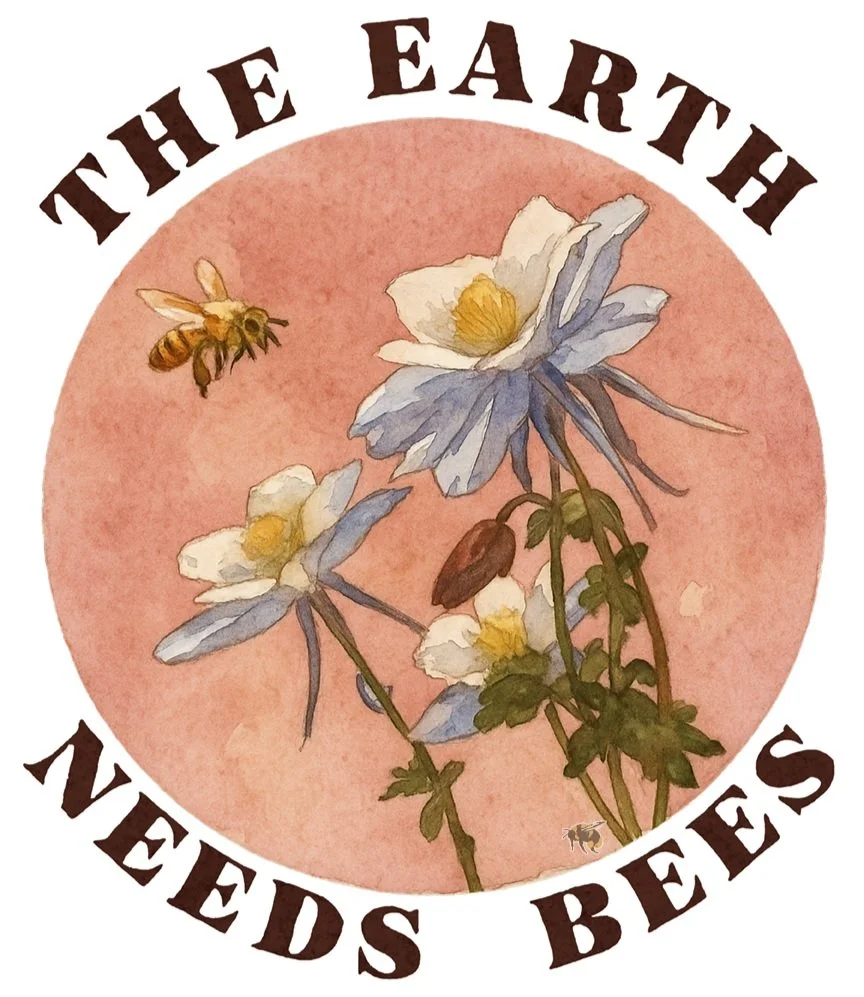The Earth Needs Bees
Bees are far more than just symbols of summer or the subjects of our art — they are ecological linchpins that hold much of our planet's biodiversity together. These small pollinators support the reproduction of over 85% of flowering plants and nearly 75% of global food crops, making them essential for both natural ecosystems and human agriculture¹. Without bees, the fruits, vegetables, nuts, and seeds that we rely on daily would diminish drastically, with ripple effects through global food webs and economies.
Beyond crops, wild plants also depend on bee pollination to reproduce and thrive. These plants in turn sustain birds, insects, and mammals, making bees foundational to entire ecosystems. Healthy bee populations ensure genetic diversity in plant species, stabilize soil through vegetation, and even contribute to carbon sequestration by maintaining forests and grasslands².
However, bee populations are declining at alarming rates. Studies have shown that many native bee species are experiencing sharp population drops or range contractions, while managed honeybee colonies are struggling to survive from year to year³. This crisis is largely driven by human activities: habitat destruction, pesticide use (especially neonicotinoids), monoculture farming, climate change, and the spread of parasites like the Varroa mite⁴.
Perhaps most alarming is how these threats interact. For example, a fragmented habitat not only reduces foraging areas but also makes bees more vulnerable to pesticides and disease. Climate change compounds this stress by altering bloom times and disrupting the seasonal synchrony between bees and plants⁵. In essence, we are dismantling the ecosystems that bees — and we — depend on.
Below are a few of our bee and flower inspired art and their stories!
Columbines & Honeybee
This watercolor and ink illustration, titled “Columbines & Honeybee,” features a honeybee in flight among delicate columbine blossoms — a native wildflower treasured across the American West. The image was inspired by a photograph taken in the Colorado high country near Lake Isabelle, where alpine meadows buzz with life during the brief mountain summer. The piece serves not only as a celebration of pollinator beauty but as a quiet call to action. Bees, though small, sustain ecosystems far larger than themselves. Every petal and wingstroke in this artwork reminds us of their vital place in the natural world and our shared responsibility to protect them.
Mountain Asters & Bumblebee
This delicate watercolor and ink piece captures a quiet alpine moment: a native bumblebee approaching a cluster of vivid purple mountain asters growing out of a weathered rock. The inspiration for this artwork came from a photograph taken during a four-day backpacking excursion through the Zirkel Wilderness of northern Colorado — a region where resilient wildflowers bloom defiantly among stone, and pollinators work tirelessly in the thin mountain air. The image speaks to the beauty of balance in wild ecosystems, and to the quiet labor of bees that sustain them. It’s a tribute to nature’s persistence — and a reminder of what’s at stake when we fail to protect it.
California Poppies & Bumblebees
This watercolor and ink illustration captures the energy and joy of a rare sunny day in San Francisco, when California poppies — the state’s iconic wildflower — had just burst into bloom. Inspired by that moment, the piece shows bumblebees eagerly moving from flower to flower, drawn by the season’s first golden offering. The bees’ motion, paired with the vibrant, silken petals of the poppies, reflects the natural rhythms that spring to life even in urban spaces. It’s a celebration of resilience, timing, and the beauty that unfolds when wild nature finds a moment to shine.
‘Nuncs & Bumblebee
This watercolor and ink piece was inspired by a quiet, golden moment close to home — a blooming red ranunculus in our Colorado backyard garden, just as a bumblebee came buzzing in. The bold layers of the flower, paired with the soft blue sky, offered the perfect contrast to capture the richness of everyday nature. Even in cultivated spaces, bees play their vital role, moving tirelessly from bud to bloom. This piece is a gentle reminder that we don’t have to travel far to witness the beauty of pollination — sometimes, it’s right outside our door.
At Hive & Hue Creative, our bee-inspired art is both a celebration of these extraordinary pollinators and a gentle reminder of their plight. We hope each design sparks admiration and awareness, encouraging a deeper appreciation for the delicate systems that sustain life on Earth. Please visit our store to bring these moments home with you!
Citations:
¹ Klein, A. M., Vaissière, B. E., Cane, J. H., et al. (2007). Importance of pollinators in changing landscapes for world crops. Proceedings of the Royal Society B.
² Ollerton, J., Winfree, R., & Tarrant, S. (2011). How many flowering plants are pollinated by animals? Oikos.
³ Potts, S. G., Biesmeijer, J. C., Kremen, C., et al. (2010). Global pollinator declines: trends, impacts and drivers. Trends in Ecology & Evolution.
⁴ Goulson, D., Nicholls, E., Botías, C., & Rotheray, E. L. (2015). Bee declines driven by combined stress from parasites, pesticides, and lack of flowers. Science.
⁵ IPBES (2016). The Assessment Report on Pollinators, Pollination and Food Production. Intergovernmental Science-Policy Platform on Biodiversity and Ecosystem Services.




